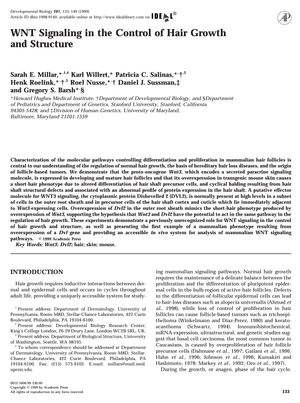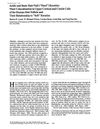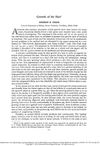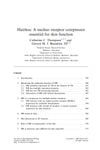WNT Signaling in the Control of Hair Growth and Structure
March 1999
in “
Developmental biology
”

TLDR The research shows that a gene called Wnt3 affects hair growth and structure, causing short hair and balding when overactive.
The study demonstrated that the proto-oncogene Wnt3 is expressed in both developing and mature hair follicles and that its overexpression in transgenic mice leads to a short-hair phenotype and cyclical balding due to altered differentiation of hair shaft precursor cells and structural defects in the hair shaft. The study also found that the cytoplasmic protein Dishevelled 2 (DVL2), which is believed to be an effector molecule for WNT3 signaling, is present at high levels in certain cells of the hair follicle and that overexpression of DVL2 results in a similar short-hair phenotype as WNT3 overexpression. These findings suggest that WNT signaling plays a previously unrecognized role in the regulation of hair growth and structure and provide a model for studying mammalian WNT signaling pathways in vivo.




